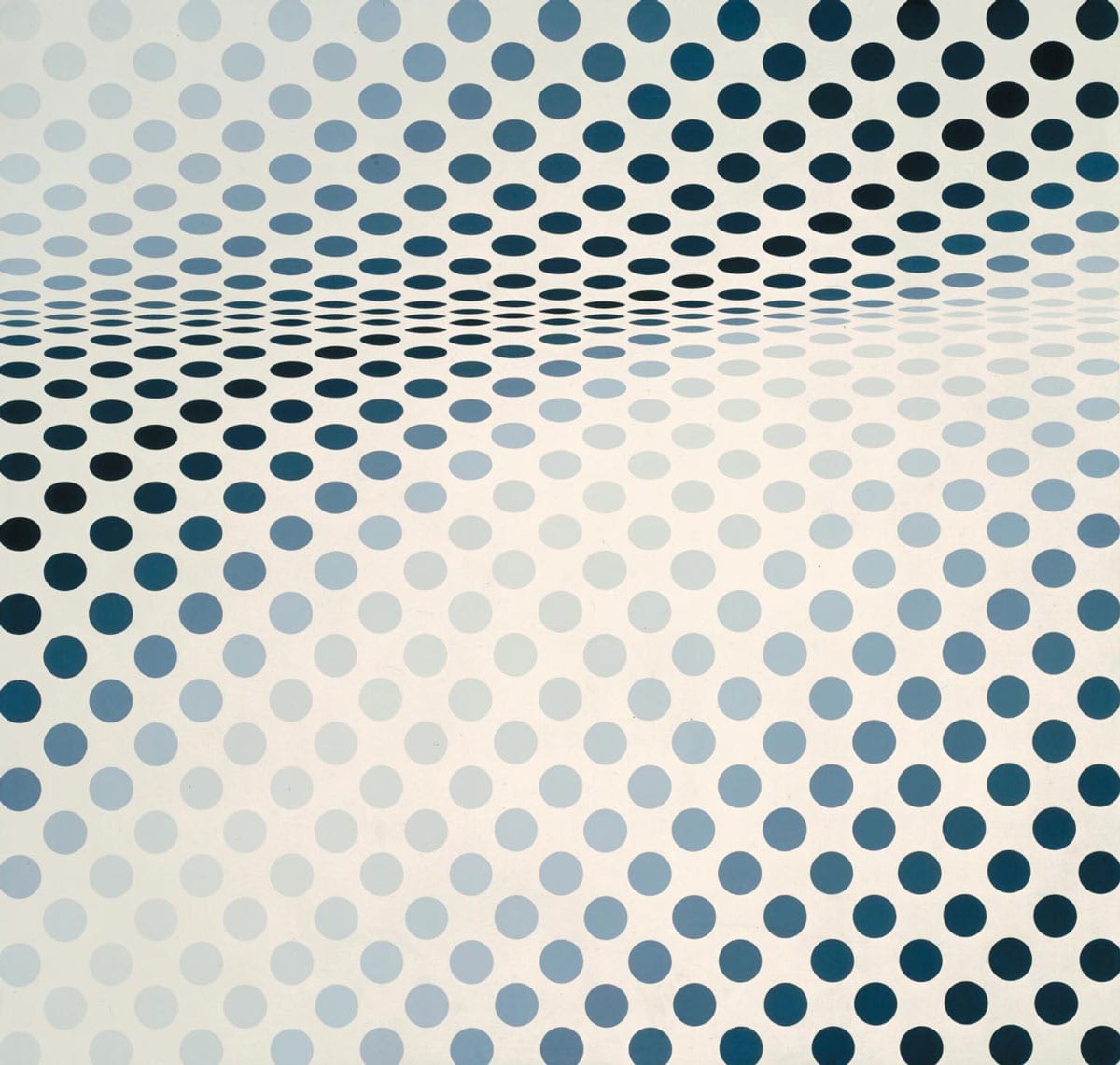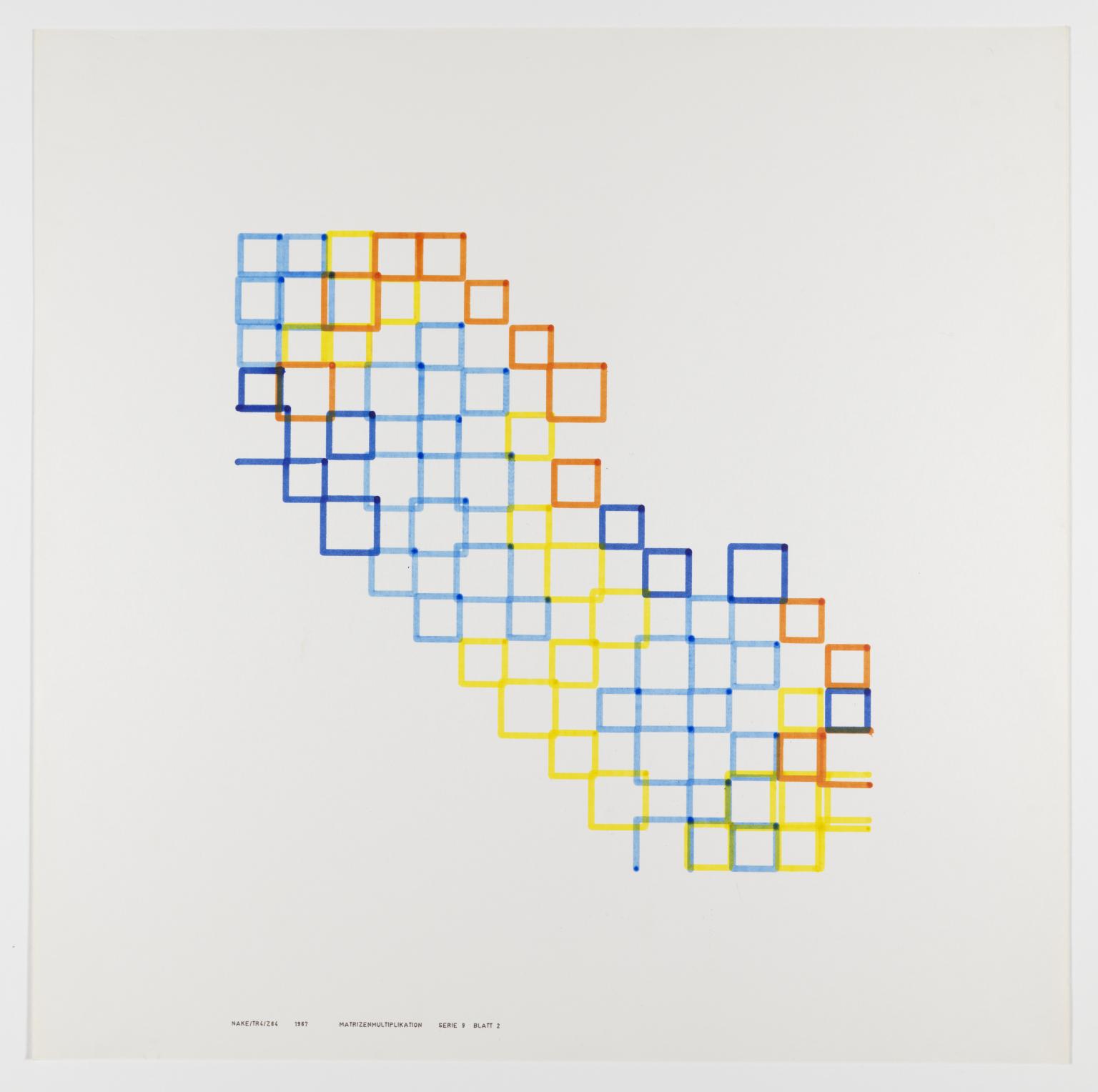Mind, Blown
New artists to me this week:
John Whitney - an early pioneer of computer art, animation, and inventor of slit-scan photography. His work is astonishing.
Bridget Riley - an English painter who is one of the foremost exponents of Op art. "One of the most significant living artists, Riley's work has radically explored the active role of perception in art, using the interrelationship between line and color to convey movement and light within the pictorial field. From the early 1960s, the artist has employed elementary shapes–such as circles, stripes, and curves–to create visual experiences that actively engage the viewer, testing the limits of each element at various stages throughout her career." (David Zwirner)

Frieder Nake - a mathematician, computer scientist, and pioneer of computer art. He is best known internationally for his contributions to the earliest manifestations of computer art with three small exhibitions in 1965 (Wikipedia). Nake was one of the artists in the infamous 1968 Cybernetic Serendipity gallery show.

For last week’s assignment we explored and compared two publications - Leonardo and The Journal for Artistic Research. I was familiar with Leonardo before class and have previously enjoyed the articles I managed to understand. Leonardo tends more towards the scientific rather than to art. The articles are easily downloadable if you have a subscription to the journal or have access through a university. The Journal for Artistic Research was new to me and I enjoyed searching through the content which is possibly closer to the work we will undertake during the Computational Arts programme.
I found several articles of interest and ultimately choose what I think is a research paper, Responsive Aesthetics: Remediating Digital-to-Analog Television Converters as Artist Tools by Eric Souther, Laura McGough, and Jason Bernagozzi. The paper is about the process and research involved in creating a digital-to-analog television converter for use as an artist tool for intervention with the digital broadcast image through real-time datamoshing. Datamoshing is defined “as an exploitation and interruption of the algorithms that comprise high quality digital streaming video, resulting in the visual distortion and alteration of the image.”
The authors wanted to create a “responsive datamoshing system that would not only modulate and distort the incoming broadcast image, but also provide artists with a level of control over these variations.” They detail their approach as artists, their research into early pioneers of signal disruption in the 1960’s such as Nam June Paik, and their intense design and iteration of the tool. The paper was well written, researched, documented with images, and a good example of the type of writing that might be expected for a dissertation.
In preparation for Assignment 1, which includes researching a topic and developing a project or experiment based on that topic, I have four general areas of interest pertaining to computation:
Sub topics: Conductive fabric and fabric pattern design using computational art
Themes: privacy, surveillance, applications for people who are physically or mentally challenged. What are the repercussions of having everything tracked? Will I be denied a 30 year mortgage based on the data gathered from my fitbit?
Related Reading and Viewing:
Sophia Brueckner and the Embodisuit
Rachel Freire
Glitch Textiles
Project Soli
Themes: privacy, surveillance, controlling an environment from afar, having to have a device like a phone to access control and the death of the simple and elegant switches. What are the implications of having an environment that is reliant on Wi-Fi?
AI – in robots used in healthcare, emotional support, and personal assistants.
AI – in the interpretation of data, facial recognition, and surveillance.
Themes: increasing reliance on robots, decreasingly empathetic ability, and rising epidemics of depression and isolation
Related Reading:
Alone Together: Why We Expect More from Technology and Less from Each Other
Algorithmic Bias
I have just started to read Programmed Inequality by Marie Hicks in which Hicks discusses the role of structural gender discrimination in the collapse of technical dominance in Britain. The President of Harvey Mudd College Maria M. Klawe writes in her endorsement of the book, “It is an account of how the UK civil service gradually but deliberately pushed women out of computing technology jobs over a three-decade period. It's one of the best researched and most compelling examples of the negative impact of gender and class discrimination on a country's economy.”
While the book focuses on the UK, the same phenomenon was happening in the US. I’m interested in learning more about the how the field become predominantly male and examine the social construct that men are more technical then women. I’d also like to discuss how society values technical ability over traditionally feminine pursuits of crafting and being domestic.
Subtopic: Material Feminism

When Women Stopped Coding
The Forgotten Female Programmers Who Created Modern Tech
How The Tech Industry Wrote Women Out of History
Women in Computing
'HER'story of the Tech Industry: When Women Were Computers